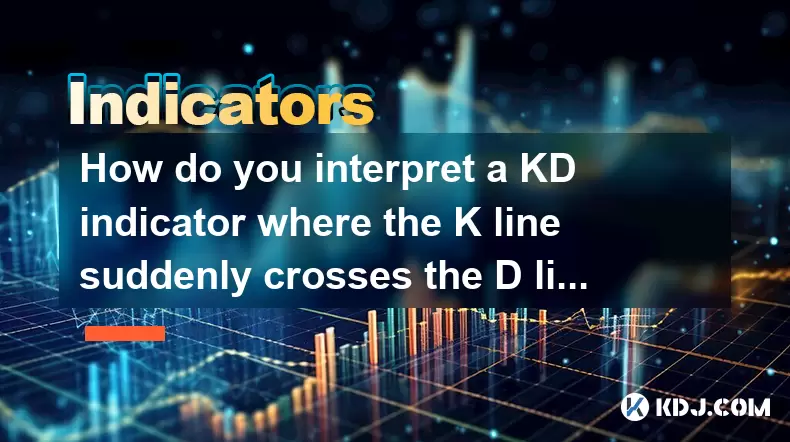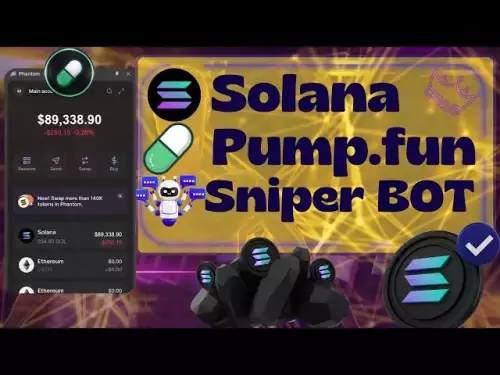-
 Bitcoin
Bitcoin $115100
-1.30% -
 Ethereum
Ethereum $4758
-1.70% -
 XRP
XRP $3.027
-2.19% -
 Tether USDt
Tether USDt $0.9998
-0.01% -
 BNB
BNB $883.2
-1.42% -
 Solana
Solana $204.0
2.62% -
 USDC
USDC $1.000
0.02% -
 Dogecoin
Dogecoin $0.2371
-0.97% -
 TRON
TRON $0.3612
-1.24% -
 Cardano
Cardano $0.9128
-2.19% -
 Chainlink
Chainlink $26.13
-3.93% -
 Hyperliquid
Hyperliquid $44.73
0.90% -
 Sui
Sui $3.715
-0.56% -
 Stellar
Stellar $0.4153
-2.41% -
 Ethena USDe
Ethena USDe $1.000
-0.04% -
 Bitcoin Cash
Bitcoin Cash $588.9
-2.06% -
 Avalanche
Avalanche $25.91
3.27% -
 Hedera
Hedera $0.2525
-1.45% -
 Litecoin
Litecoin $120.9
-1.35% -
 UNUS SED LEO
UNUS SED LEO $9.607
0.30% -
 Toncoin
Toncoin $3.382
-0.31% -
 Shiba Inu
Shiba Inu $0.00001329
-0.38% -
 Uniswap
Uniswap $11.38
-1.67% -
 Polkadot
Polkadot $4.222
2.83% -
 Aave
Aave $354.5
4.93% -
 Dai
Dai $0.0000
0.00% -
 Bitget Token
Bitget Token $4.704
-1.49% -
 Cronos
Cronos $0.1565
1.83% -
 Ethena
Ethena $0.7463
1.55% -
 Monero
Monero $265.8
-0.39%
How do you interpret a KD indicator where the K line suddenly crosses the D line after being blunt at a low level?
A flat K line near 20 followed by a sudden crossover above the D line signals potential bullish reversal, especially in oversold crypto markets.
Aug 13, 2025 at 11:35 am

Understanding the KD Indicator Basics
The KD indicator, also known as the Stochastic Oscillator, is a momentum-based technical analysis tool widely used in cryptocurrency trading. It consists of two lines: the K line (fast stochastic) and the D line (slow stochastic). The K line reflects the current closing price relative to the price range over a specified period, typically 14 candles. The D line is a moving average of the K line, usually calculated over 3 periods, which smooths out fluctuations and provides a clearer signal. Both lines oscillate between 0 and 100, with levels below 20 considered oversold and above 80 considered overbought. Traders use crossovers between the K and D lines to identify potential entry or exit points.
What Does a Blunt K Line at a Low Level Indicate?
When the K line remains flat or "blunt" near the lower boundary of the oscillator—typically below 20—it suggests that the asset has been in a prolonged downtrend with little upward momentum. This stagnation often reflects market exhaustion, where selling pressure has weakened but buyers have not yet stepped in. In the context of cryptocurrency markets, which are highly volatile and sentiment-driven, such a condition may occur after a sharp price drop due to negative news, exchange outages, or macroeconomic factors. The flat movement indicates lack of conviction from both bulls and bears, creating a potential setup for a reversal if buying interest returns.
Interpreting the Sudden K Line Cross Above the D Line
A sudden upward crossover of the K line over the D line after a period of bluntness at a low level is a significant signal. This event suggests that positive momentum is beginning to build within the market. The crossover acts as a trigger, indicating that short-term price action is shifting from bearish to bullish. In crypto trading, where price movements can be rapid and exaggerated, such a signal often precedes a short-term rally. The importance of this crossover increases when it occurs below the 20 threshold, as it emerges from oversold territory, reinforcing the idea of a potential reversal. Traders interpret this as a buy signal, especially when confirmed by volume or other indicators.
Key Steps to Validate the Signal in Cryptocurrency Trading
To ensure the reliability of this KD crossover signal, traders should follow a systematic verification process:
- Confirm the time frame: Check the signal across multiple time frames (e.g., 1-hour, 4-hour, daily). A crossover on the daily chart carries more weight than on a 5-minute chart.
- Analyze volume: A rising volume during the crossover supports the legitimacy of the momentum shift. In crypto, use on-chain or exchange volume data from platforms like TradingView or CoinGecko.
- Check for divergence: Look for bullish divergence where the price makes a lower low, but the KD indicator makes a higher low—this strengthens the reversal signal.
- Cross-reference with support levels: Ensure the crossover occurs near a known support zone, such as a previous swing low or a Fibonacci retracement level (e.g., 61.8%).
- Monitor for confirmation candles: Wait for at least one full candle to close above the D line to avoid false signals caused by market noise.
Practical Example Using a Cryptocurrency Chart
Suppose you are analyzing Bitcoin (BTC/USDT) on a 4-hour chart. Over the past 48 hours, the K line has hovered near 15, showing minimal movement, while the D line is slightly above it, both remaining in the oversold zone. Suddenly, the K line sharply rises and crosses above the D line. To act on this:
- Open your charting platform (e.g., TradingView).
- Apply the Stochastic Oscillator with default settings (14,3,3).
- Observe that the crossover occurs at a price level of $60,000, which aligns with a historical support area.
- Check the volume indicator: notice a 20% spike in trading volume coinciding with the crossover.
- Switch to the daily chart: confirm that the KD lines are also showing a potential upward turn from oversold conditions.
- Set a limit buy order slightly above the current price (e.g., $60,200) to capture the momentum.
This method ensures that the signal is not acted upon in isolation but supported by multiple technical factors.
Risks and Limitations of the KD Crossover Signal
While the K line crossing above the D line from a low blunted position is a strong signal, it is not infallible. In highly volatile cryptocurrency markets, whipsaws and false signals are common. For instance, a sudden pump due to social media hype might trigger the crossover, only for the price to reverse quickly. The KD indicator is lagging by nature, meaning it reacts to price changes rather than predicting them. Overreliance on this single indicator without considering broader market context—such as regulatory news or macroeconomic data—can lead to losses. Additionally, in ranging markets, the KD indicator may generate multiple crossovers with no sustained trend, resulting in repeated unprofitable trades.
Frequently Asked Questions
What does a "blunt" K line mean in the KD indicator?
A blunt K line refers to a period where the K line shows little movement and remains nearly horizontal near the bottom of the oscillator (below 20). This indicates that price action has been stagnant at low levels, often signaling market exhaustion after a downtrend.
Can the KD crossover signal be used in sideways crypto markets?
Yes, but with caution. In consolidation phases, the KD indicator frequently generates crossover signals that lack follow-through. Traders should combine it with Bollinger Bands or RSI to filter out noise and confirm trend strength.
How do I adjust the KD settings for different crypto time frames?
For shorter time frames like 5-minute or 15-minute charts, consider using (8,3,3) settings to increase sensitivity. For daily charts, stick to the default (14,3,3) or use (21,5,5) for a smoother, longer-term view.
Is the KD indicator effective for all cryptocurrencies?
The KD indicator works best on highly liquid assets like Bitcoin and Ethereum, where price movements are less prone to manipulation. For low-cap altcoins with erratic volume, the signal may be less reliable due to sporadic price spikes and low trading depth.
Disclaimer:info@kdj.com
The information provided is not trading advice. kdj.com does not assume any responsibility for any investments made based on the information provided in this article. Cryptocurrencies are highly volatile and it is highly recommended that you invest with caution after thorough research!
If you believe that the content used on this website infringes your copyright, please contact us immediately (info@kdj.com) and we will delete it promptly.
- XYZVerse, Shiba Inu, and the 2025 Bull Cycle: A Meme Coin Evolution
- 2025-08-24 13:05:12
- WLFI Token, BingX, and the Trading Landscape: A New York Perspective
- 2025-08-24 12:45:20
- Aave, Governance, Allocation: Navigating DeFi's Shifting Sands
- 2025-08-24 12:45:20
- Crypto Coins in 2025: Meme Coins, Undervalued Blockchains, and Bull Run Predictions
- 2025-08-24 13:05:12
- Fed Pivot Ignites Crypto Rally: Altcoins Set to Outperform?
- 2025-08-24 13:25:12
- Eric Trump, Tokyo, and Metaplanet: A Bitcoin Bonanza?
- 2025-08-24 11:05:13
Related knowledge

What does it mean when the +DI and -DI cross frequently in the DMI indicator but the ADX is flattening?
Aug 11,2025 at 03:15am
Understanding the DMI Indicator ComponentsThe Directional Movement Index (DMI) is a technical analysis tool composed of three lines: the +DI (Positive...

What does the sudden appearance of a "dark cloud cover" candlestick pattern during an uptrend indicate?
Aug 13,2025 at 11:35am
Understanding the 'Dark Cloud Cover' Candlestick PatternThe dark cloud cover is a bearish reversal pattern in technical analysis that typically appear...

What does it mean when the moving average, MACD, and RSI all send buy signals simultaneously?
Aug 11,2025 at 01:42pm
Understanding the Convergence of Technical IndicatorsWhen the moving average, MACD, and RSI all generate buy signals at the same time, traders interpr...

What does it mean when both the KDJ indicator and the RSI show overbought signals simultaneously?
Aug 13,2025 at 11:35am
Understanding the KDJ Indicator in Cryptocurrency TradingThe KDJ indicator is a momentum oscillator derived from the Stochastic Oscillator, widely use...

What does it mean when the price is trading above the SAR indicator but the red dots are densely packed?
Aug 09,2025 at 11:49pm
Understanding the SAR Indicator and Its Visual SignalsThe SAR (Parabolic Stop and Reverse) indicator is a technical analysis tool used primarily to de...

What does it mean when the candlestick chart forms a "Morning Star" but trading volume is sluggish?
Aug 12,2025 at 06:28pm
Understanding the Morning Star Candlestick PatternThe Morning Star is a three-candle bullish reversal pattern commonly observed in cryptocurrency pric...

What does it mean when the +DI and -DI cross frequently in the DMI indicator but the ADX is flattening?
Aug 11,2025 at 03:15am
Understanding the DMI Indicator ComponentsThe Directional Movement Index (DMI) is a technical analysis tool composed of three lines: the +DI (Positive...

What does the sudden appearance of a "dark cloud cover" candlestick pattern during an uptrend indicate?
Aug 13,2025 at 11:35am
Understanding the 'Dark Cloud Cover' Candlestick PatternThe dark cloud cover is a bearish reversal pattern in technical analysis that typically appear...

What does it mean when the moving average, MACD, and RSI all send buy signals simultaneously?
Aug 11,2025 at 01:42pm
Understanding the Convergence of Technical IndicatorsWhen the moving average, MACD, and RSI all generate buy signals at the same time, traders interpr...

What does it mean when both the KDJ indicator and the RSI show overbought signals simultaneously?
Aug 13,2025 at 11:35am
Understanding the KDJ Indicator in Cryptocurrency TradingThe KDJ indicator is a momentum oscillator derived from the Stochastic Oscillator, widely use...

What does it mean when the price is trading above the SAR indicator but the red dots are densely packed?
Aug 09,2025 at 11:49pm
Understanding the SAR Indicator and Its Visual SignalsThe SAR (Parabolic Stop and Reverse) indicator is a technical analysis tool used primarily to de...

What does it mean when the candlestick chart forms a "Morning Star" but trading volume is sluggish?
Aug 12,2025 at 06:28pm
Understanding the Morning Star Candlestick PatternThe Morning Star is a three-candle bullish reversal pattern commonly observed in cryptocurrency pric...
See all articles

























































































